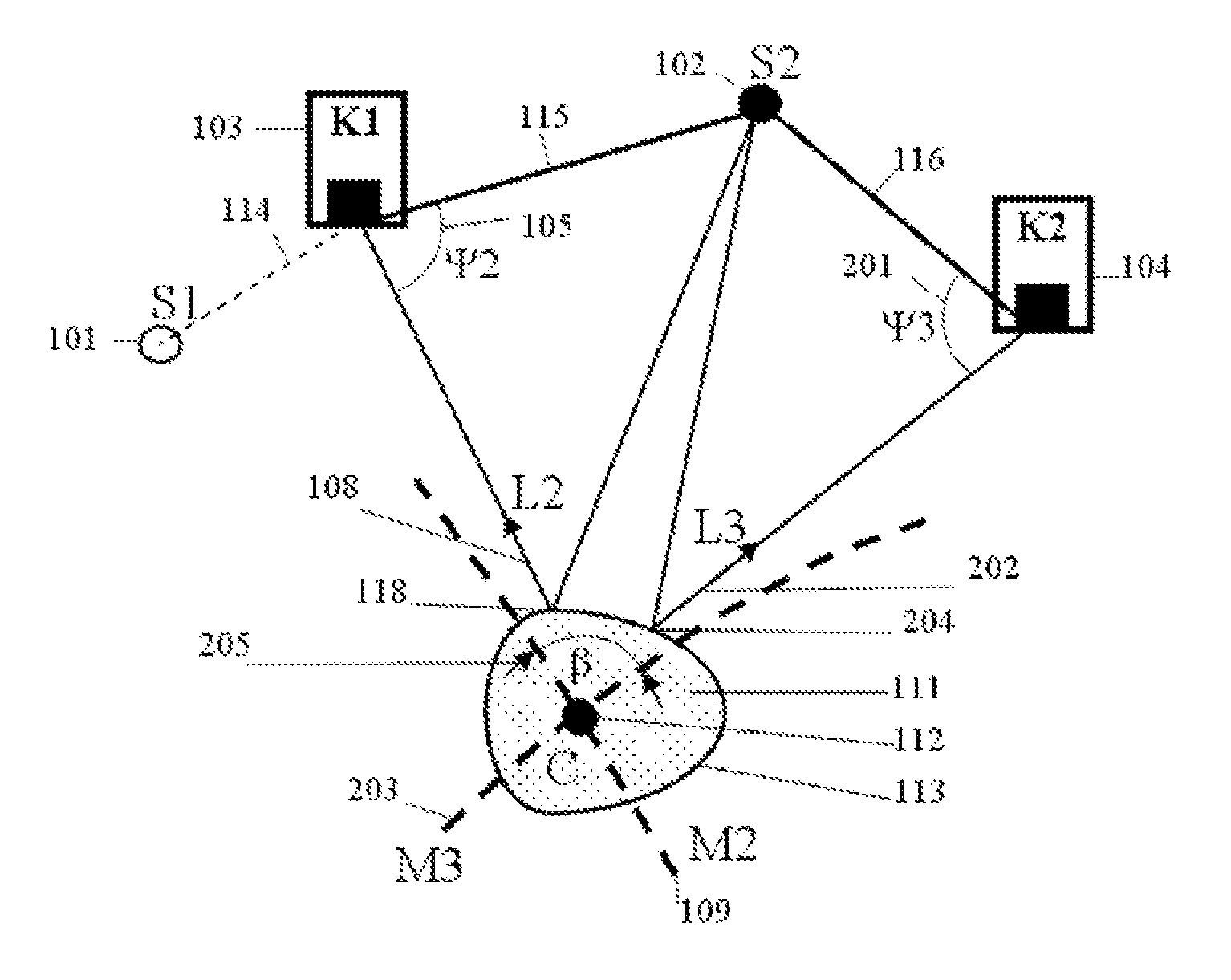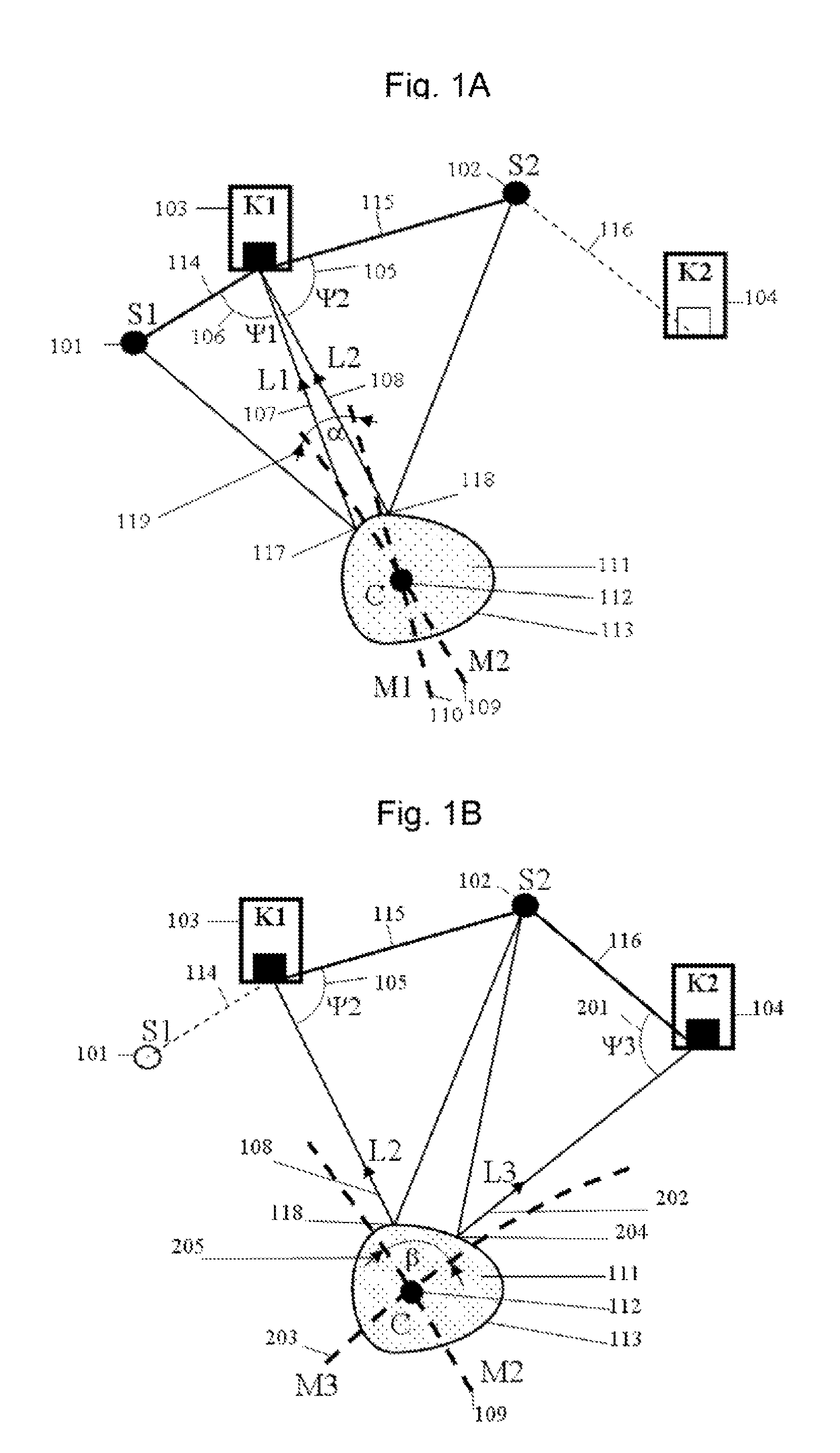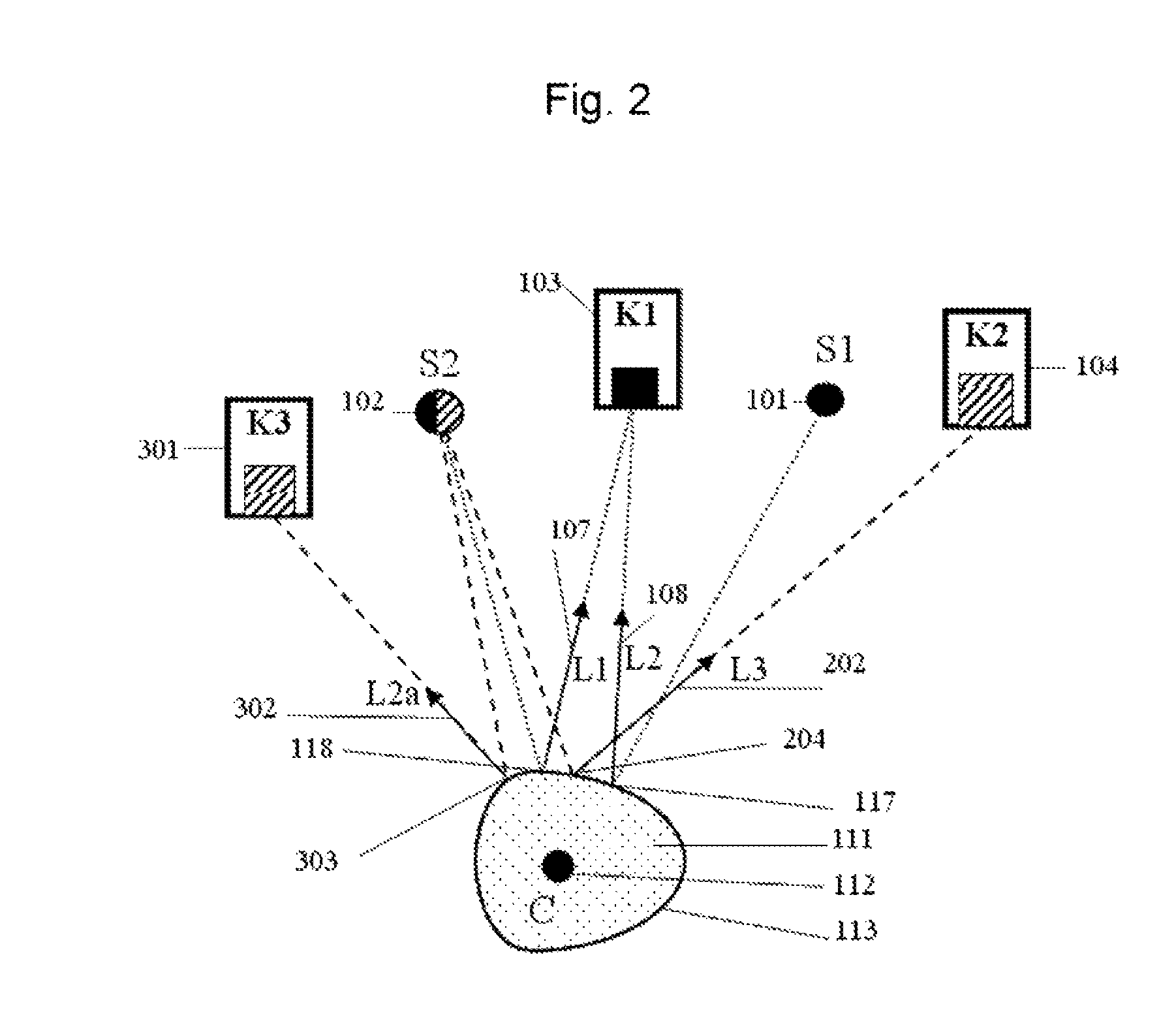Optical tracking apparatus using six degrees of freedom
a technology of optical tracking and apparatus, applied in the field of eye tracking, can solve the problems of increasing system complexity and cost, requiring high-precision instruments and sophisticated data analysis and interpretation, and requiring measurement that is difficult to achieve in practice, so as to improve the appearance of pupils.
- Summary
- Abstract
- Description
- Claims
- Application Information
AI Technical Summary
Benefits of technology
Problems solved by technology
Method used
Image
Examples
Embodiment Construction
[0028]The present invention is now described more fully with reference to the accompanying figures, in which some of all possible embodiments of the invention are shown. The present invention may be embodied in various forms and should not be viewed as limited to the embodiments set forth herein. Rather these embodiments are provided so that this disclosure will be thorough and complete and will fully disclose the invention to those skilled in the art.
[0029]One preferred embodiment of the invention consists of two off-axis optical sources S1 and S2 and two cameras K1 and K2, as shown in FIG. 1A and FIG. 1B. Such an embodiment is capable of performing the two operational modes in cycles, i.e. one after another. Accordingly, the first operational mode is shown schematically in FIG. 1A, while the second operational mode in FIG. 1B.
[0030]FIG. 1 represents the following elements of the preferred embodiment: S1 and S1 are a first and second light source (101 and 102), respectively; K1 and...
PUM
 Login to View More
Login to View More Abstract
Description
Claims
Application Information
 Login to View More
Login to View More - R&D
- Intellectual Property
- Life Sciences
- Materials
- Tech Scout
- Unparalleled Data Quality
- Higher Quality Content
- 60% Fewer Hallucinations
Browse by: Latest US Patents, China's latest patents, Technical Efficacy Thesaurus, Application Domain, Technology Topic, Popular Technical Reports.
© 2025 PatSnap. All rights reserved.Legal|Privacy policy|Modern Slavery Act Transparency Statement|Sitemap|About US| Contact US: help@patsnap.com



